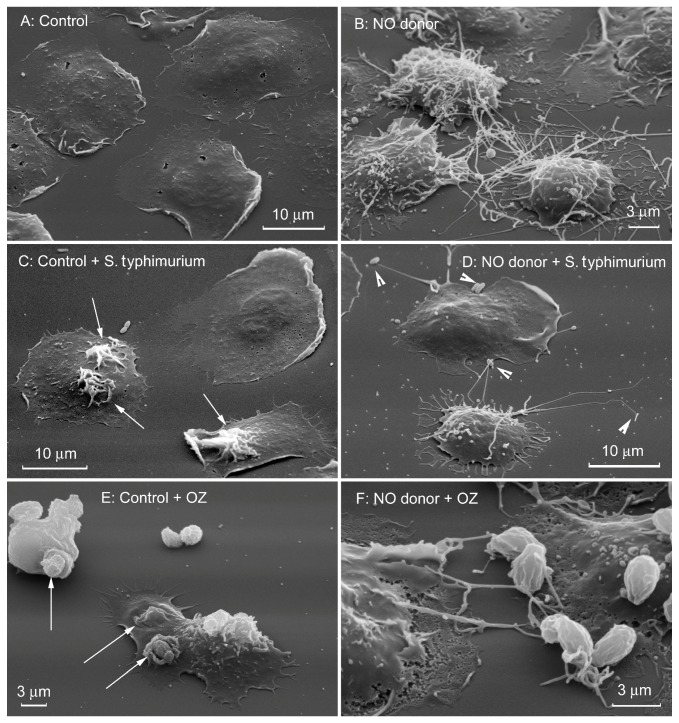Figure 3.
Nitric oxide (NO) shifts interactions of neutrophils with bacteria and yeast from phagocytosis to binding by cytonemes. Scanning electron microscopy images of human neutrophils plated to fibronectin-coated substrata during 20 min at 37 °C at the control conditions (A) or in the presence of 1 mM NO donor diethylamine NONOate (B). (C,D) Serum-opsonized S. typhimurium were added for 5 min at 37 °C to attached neutrophils. White arrows (C) indicate ruffles on the cell surface considered to be the sites of bacteria entering into the cells as a result of phagocytosis. (E,F) Yeast (particles of serum-opsonized zymosan, OZ) was added for 5 min at 37 °C to attached neutrophils. White arrows (E) indicate specific phagocytic “cups” on the surface of control cells. In the presence of NO donor bacteria (D) and yeast particles (F) were bound by cytonemes of neutrophils. The photographs shown in this figure are similar to the photographs published in our previous articles [6,7].

